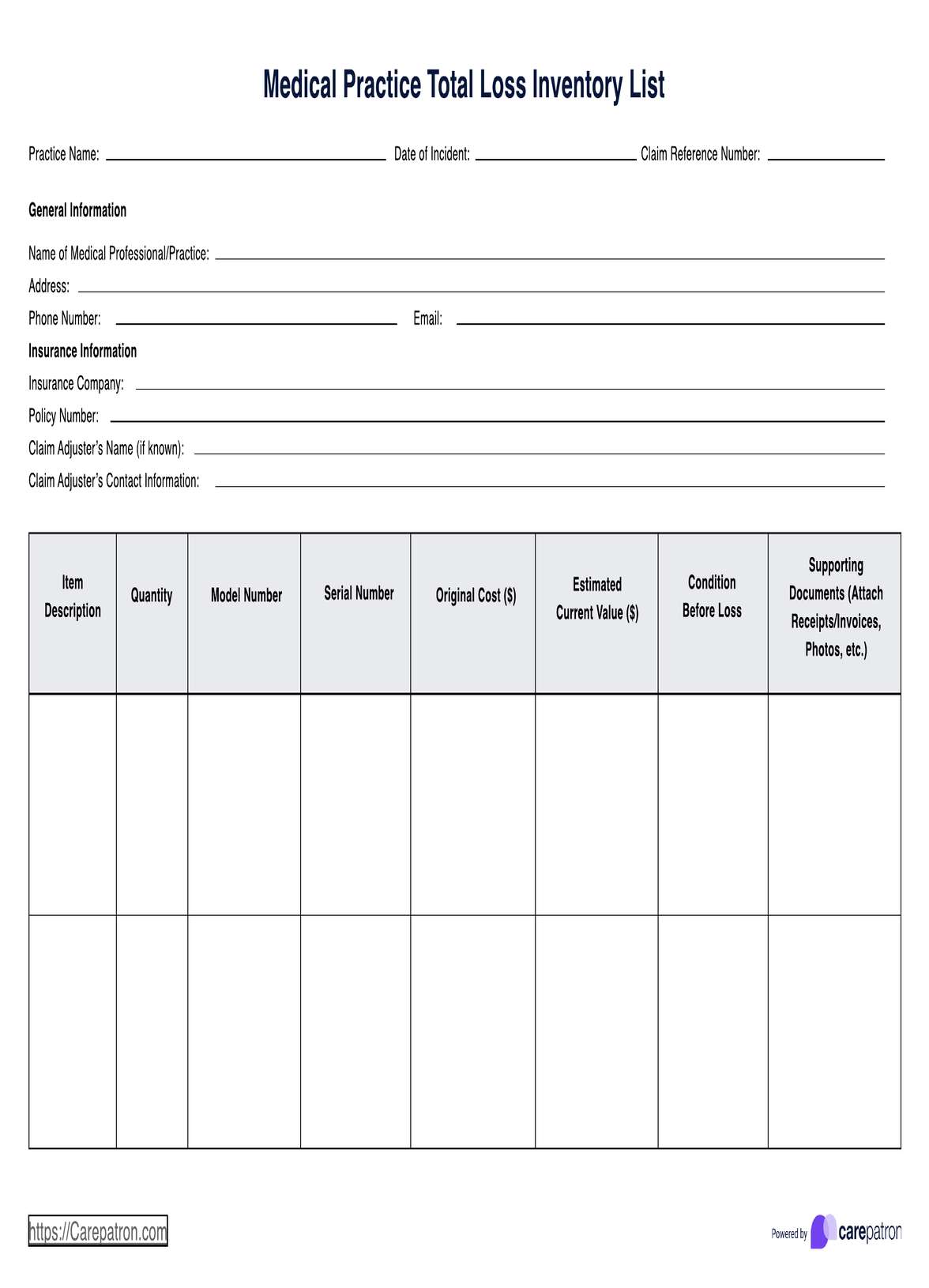Utilize our template and input item details, quantities, and values. Customize based on your needs and preferences.

Total Loss Inventory List
Download our Total Loss Inventory List Template for efficient cataloging after losses. Simplify insurance claims and recovery planning.
Use Template
Total Loss Inventory List Template
Commonly asked questions
After significant events such as fires or thefts, they are used to document and evaluate damaged or lost assets.
Fill in the details of affected items, attach supporting documents like receipts or photos, and submit for insurance claims or recovery planning.
EHR and practice management software
Get started for free
*No credit card required
Free
$0/usd
Unlimited clients
Telehealth
1GB of storage
Client portal text
Automated billing and online payments











